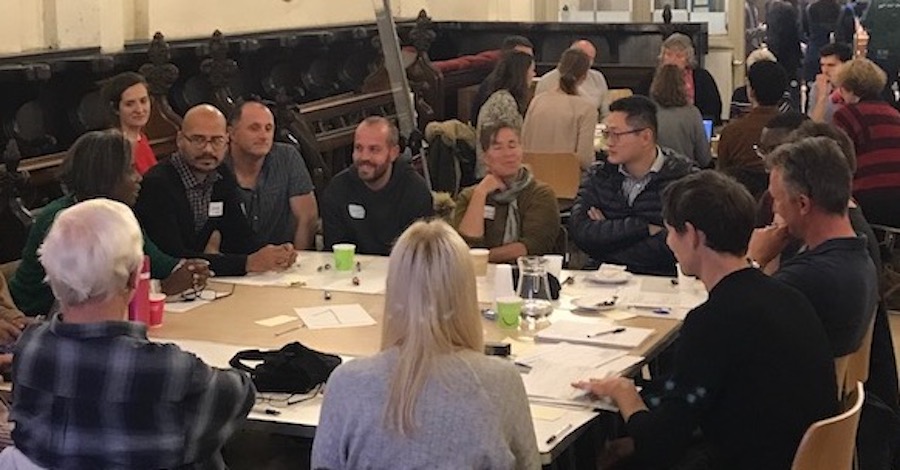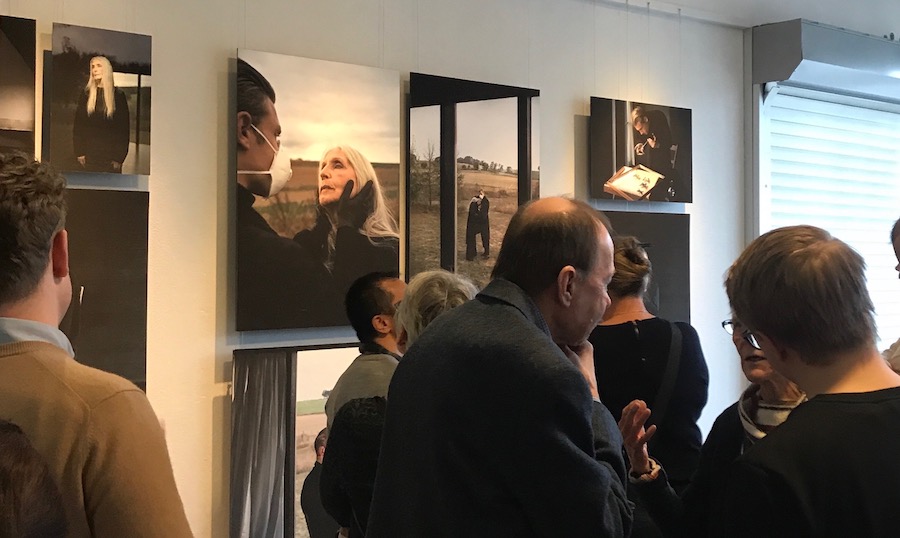What does the public think about the new genome editing technology CRISPR and how should we talk about it? The ORION project has organised public dialogues in the Czech Republic, Germany, Sweden and the UK to find out. The aim with the public dialogues was to discuss the risks and opportunities of this disruptive technology and identify any concerns the public might have.
It was a dark January evening when around 30 specially selected participants from the greater Stockholm region met for the first time at the Swedish National Museum of Science and Technology in Stockholm. They met to talk about CRISPR, the genetic scissors that are used for genome editing. The meeting was the first of two meetings and the last leg of a series of public dialogues organised during October and November by the Babraham Institute in the UK, CEITEC in the Czech Republic, MDC in Germany and VA, Public & Science in Sweden.
The aim with the public dialogues was to discuss the risks and opportunities of disruptive technologies and identify any concerns the public might have. The outcome of the discussions will also advise how the ORION partner institutions could use open public consultations in the research process, in the design of calls for funding and in the policy advisory process. All eight dialogues were conducted in the same way, had the same content and design and a total of 120 people participated in the four countries. The invited participants represented a demographic sample of the geographic area in which the public dialogue was held.
Involving experts in content design
To ensure that the dialogues would have the right focus and cover all relevant aspects of genome editing, a series of stakeholder workshops were held in each of the four countries in September and October 2019. The workshops brought together stakeholders from across a range of specialisms and helped to develop stimuli material used during the discussions to ensure that the participants were exposed to the current issues and debates around the use of genome editing.
To provide expertise, knowledge, and a vested interest in GE technology to the general public, experts were present at all public dialogue events. Their role was to participate in the discussions with the public by answering questions participants might have and to provide additional information about the technology where necessary.

At the dialogues, the participants discussed what major concerns and possible opportunities they see with the new genome editing technology, as well as how researchers and the ORION project should communicate about it with the public. In addition to basic information about DNA, cells, genes and genomes, participants also initially learned more about CRISPR - often called genetic scissors. The CRISPR technology makes it possible to very accurately "cut" a small section of a gene to get rid of a particular disease, as well as "paste" genetic sequences to introduce a desired trait.
After brief introductions by the local host and the moderator, most of the meeting was devoted to dialogue. There were three tables, each with 10 members of the public involved in the discussion. Around each table was also a moderator, a scribe and a genome editing expert on hand to answer questions and explain concepts. The discussion revolved around various applications of genome editing, hopes and concerns about the techniques, possible future uses, ethical considerations and which communication channels work best.
Using arts to communicate science
In Berlin, Cambridge and Stockholm participants could also take part in the art installation ÆON - Trajectories of Longevity and CRISPR, which was on display in the different meeting venues. In a series of photographs, artist Emilia Tikka, together with photographer Zuzanna Kaluzna, have portrayed a fictitious couple of lovers in which the man has chosen to take a medicine that keeps his body young, while the woman ages normally. In a picture where they stand close to each other, the man wears a protective mask.

Emilia Tikka got the idea for this imaginary future with anti-aging medicine after a stay at Max Delbrück Center for Molecular Medicine (MDC) in Berlin where she worked with genetics researchers for three months. In the laboratory, she learnt that it is actually possible to make individual cells live longer and to repair damaged cells with the help of genetic engineering. Communicating cutting-edge research using art is relatively new and uncommon, but it helps to increase the breadth of communication.
“Initially, I was a bit skeptical of the idea of building the discussion around an art exhibition. It didn't feel relevant. But having been part of the project, I think it is a great idea to use artwork as a starting point for discussions with the public,” said Fredrik Wermeling, Assistant Professor at the Karolinska Institute, Sweden and expert at the Public Dialogue in Stockholm.
Does more knowledge change attitudes?
Many of the participants in the public dialogues around the EU had little or no knowledge of genetic engineering. Most of them lacked experience in the scientific world and did not know anyone working in research. For many, it was also the first time they met researchers and participated in a public dialogue. Participants were generally positive about gene editing, but they perceive certain risks. Gaining increased knowledge of a complex research area such as genome editing and CRISPR from prominent researchers was greatly appreciated.
“I am so grateful for this opportunity to learn more about the new gene technology and to talk to real researchers,” said one of the participants at the second event in Stockholm.
More information
The stakeholder workshops and public dialogues were organised by the ORION partners Babraham Institute in Cambridge, MDC in Berlin, CEITEC in Brno and VA (Public & Science) in Stockholm in close collaboration with Ipsos MORI UK.
IPSOS Mori in the UK is now compiling the results of the eighth public dialogues and the report is expected to be completed during April. The results will inform how the ORION project partners interact with end users and patients, as well as how they communicate about genome editing and CRISPR in the future.
For more information about the public dialogues please get in touch with Emma Martinez at Babraham Institute in Cambridge.